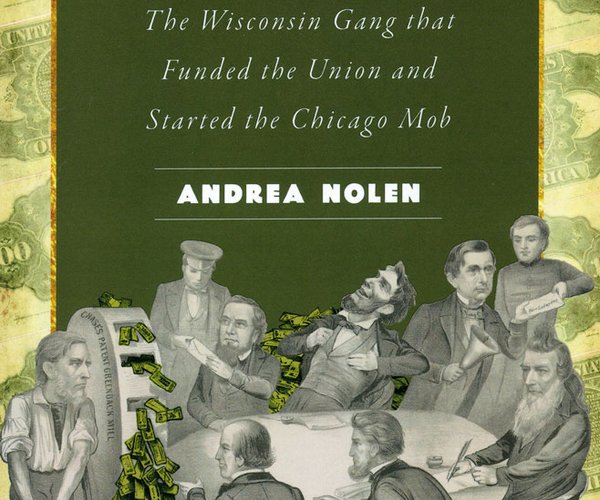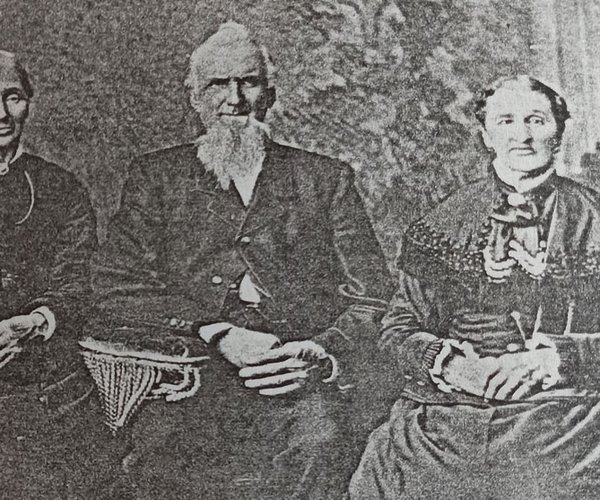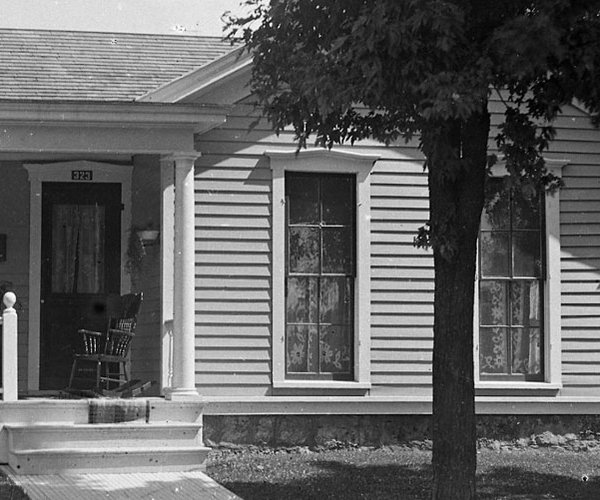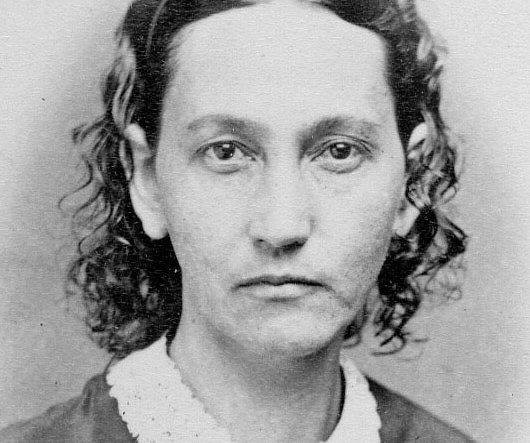After several years of anticipation, Peter Wells’ lot east of the Sentinel Office was finally going to be built upon in 1880. About 15 able-bodied men were watching Dunlap’s men move the old shop off of Well’s lot on March 16. “They wanted to see things move along.” Excavation for the foundation began on March 29 and brick work began on April 15, with a roof expected three weeks later. By the end of the month, work had been delayed because timbers that were to have arrived two weeks earlier had not arrived. “Time is money and this delay is irritating to all parties concerned.” The brick work on the Agricultural Block was completed by May 12. The roofing and floors were being put on and in. Mack & McCracken expected to move in by June 1.
The Sentinel shared a lengthy article about Peter Wells on April 7 of that year during the time that the Mack & McCracken building was being built. It shared that every spring, “Uncle Peter Wells begins to feel uneasy.” You could see him “looking around town examining his numerous corner lots and building sites. He will pull out his old memoranda, examine his leather wallet, and hunt up his assets, etcetera. Then the first thing you don’t know is, where he will stick his stake for a new building. Next day or so you will see eight or ten men digging — for greenbacks — on Peter’s land.”
Later in the article the editor added, “In a few weeks more a new and substantial brick building takes the place of some old, dilapidated, or partly burned down concern, that had been an eye-sore for years because somebody else owned it. Mr. Wells delights in building. He likes to put his money into tangible shape. He wants his wealth to do somebody else good, so he builds. He don’t go to West to do it, either.” The advantages to this were that he created labor for men and “erects business blocks, that those who can occupy them to advantage, may thrive, and be comfortably housed, and comparatively safe from fire and waste.”
It also said, “He considers a vacant lot an abomination before the Lord — especially if it is a good location for business.” He regarded a gap between buildings on the Public Square “as a standing rebuke to the name of Peter, a menace to his local pride, and implied taunt to his ability to fill it.” The long article ended, “Long may Uncle Peter sagaciate. And when he shall pass from earth — as all must, sooner or later, his work will be his best monument. The legend inscribed shall be, ‘He builded much and well, and deserved the esteem of his townsmen.’”


Another article was shared on May 19 that shows respect for Peter. “We saw him looking at the old brown shops on the south side, and squinting askance his stone store adjoining the same. The first thing you know, Peter will have that whole pile jerked out and a new brick block underway.”
Peter was also making improvements on his north side store, which was occupied by Barling & Gardner. He extended the lower story to the alley, refit the entire store room, put in a new front, and made the store one of the “pleasantest in town.” This project was started in March 1880 and he was putting a new roof on early in June. The new front was being put in later in September for Barling & Hodges.
The 1880 census shows that Peter, a retired farmer, and Julia were living on Lybrand Street [now 21st Avenue]. His granddaughter, Temperance McCammant, 19, was living with them while she attended school.
With all that Peter had going on, he still found time to travel to Iowa, where he probably visited family, returning in November. “Peter is getting used to travel.”
Peter sold property on February 23, 1881 for a brick yard. No record was found at the Court House, but it is believed that he sold to Charles Churchill, as Charles was putting in “a full set of steam machinery for making white brick for the market” on the northwest part of the village that September.
As predicted by the Sentinel, Peter purchased the property on the south side of the square that adjoined his stone store property in May. Treat & Co. had recently purchased the same from the McKey estate. Peter planned to build a two-story brick block that would take in his stone store.
One of Peter’s small rental homes on Farmers Street [now 16th Street] caught fire on May 20 as the result of a defective flue. The home, occupied by Mrs. Jacobs and family, was partly consumed. The building was repaired.
Wells was an enterprising citizen who believed in helping to build up the town, but also looked out for himself. If he built something, he expected to make it pay him. He always found good renters for his public buildings, as with his new building on the south side of the square. He had renters for the new stores before the foundation was even laid. J. J. Tschudy had rented one building for his shoe store while Randall & Son had spoken for the large double store.
Tschudy announced on June 29, 1881 that his new store was to be ready in 60 days, so he was selling out his entire stock of boots and shoes at a discount “in order to fill the new store within an entire new stock of goods.” The Monroe Manufacturing Company was constructing the iron columns for the new double store in July. The Randall store was “nearly completed” by late September.
Peter Wells continued to make a difference in Monroe for years to come. There will be more information about his activities in the next four columns.
— Matt Figi is a Monroe resident and a local historian. His column will appear periodically on Saturdays in the Times. He can be reached at mfigi48@tds.net or at 608-325-6503.





